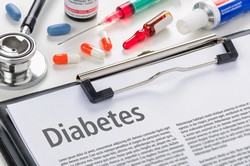Novel anti-diabetic drugs
The elevated blood glucose levels in diabetes cause dysfunction of the vascular endothelium, leading to macrovascular and microvascular complications. The main reason behind these complications is oxidative stress and inflammation. Therefore, therapeutic approaches against the reactive oxygen species (ROS) generated in the vasculature of diabetes patients could help alleviate these complications. Scientists of the EU-funded H2S IN DIABETES (Preclinical efficacy testing of hydrogen sulfide donors against diabetic complications) project investigated the utility of pharmacologically active compounds as inhibitors of mitochondrial superoxide production in microvascular endothelial cells exposed to elevated extracellular glucose. They discovered that hydrogen sulfide can reduce the hyperglycaemia-induced mitochondrial ROS production in endothelial cells and prevent diabetic vascular dysfunction of the aorta. However, hydrogen sulfide has a short in vivo half-life and its protective effect is difficult to test against long-term diabetic complications. Given that the present form of inorganic hydrogen sulfide donors is not suitable for clinical use, scientists generated novel slow-release drugs that show a constant hydrogen sulfide release rate over multiple days. They also incorporated a mitochondrial targeting moiety to facilitate specific delivery to the mitochondria, the primary site of ROS production. These novel compounds were effective against mitochondrial ROS production at concentrations more than 1 000-fold lower than sodium sulfide. Importantly, these drugs normalised the mitochondrial membrane potential, improved metabolic dysfunction and exerted a positive effect on cellular bioenergetics in hyperglycaemic endothelial cells. These improvements were associated with an increase in respiratory complex activity and suggested that hydrogen sulfide supplementation is linked to electron transport in the respiratory chain. Overall, the mechanism of action of hydrogen sulfide against mitochondrial ROS underscores its applicability for tackling diabetic complications in humans. Toxicology studies performed by the consortium confirmed the regulated release of hydrogen sulfide and tolerability of the drugs, validating their utilisation as clinical drugs for diabetes in the future.







